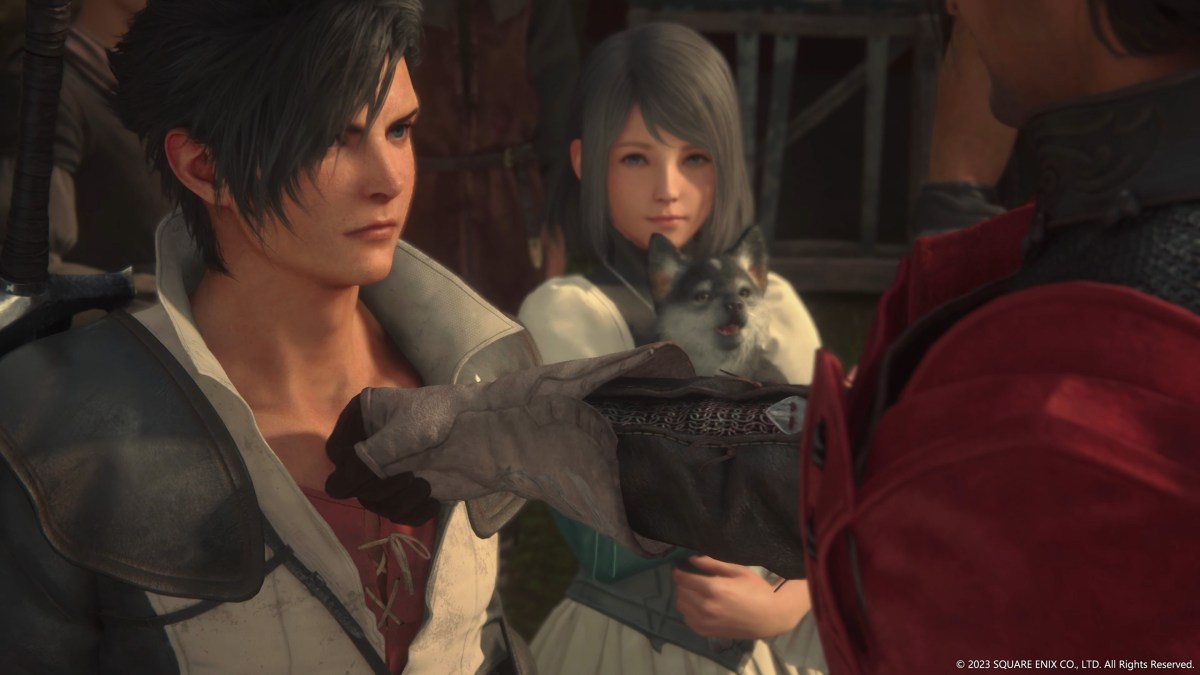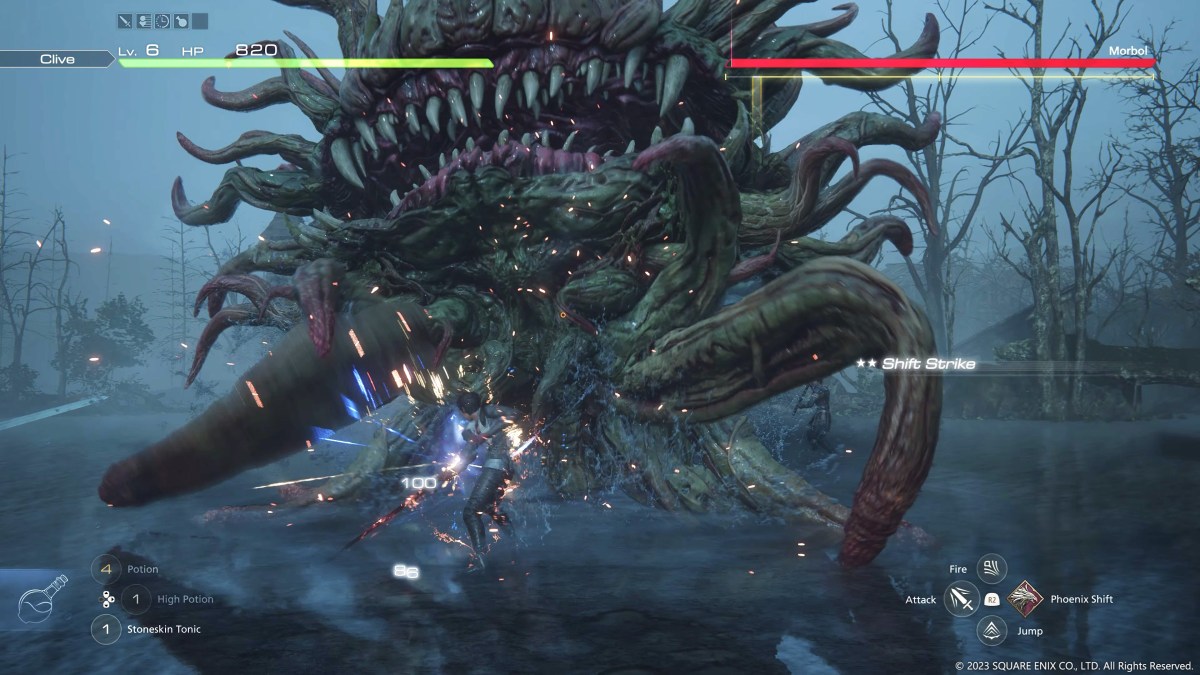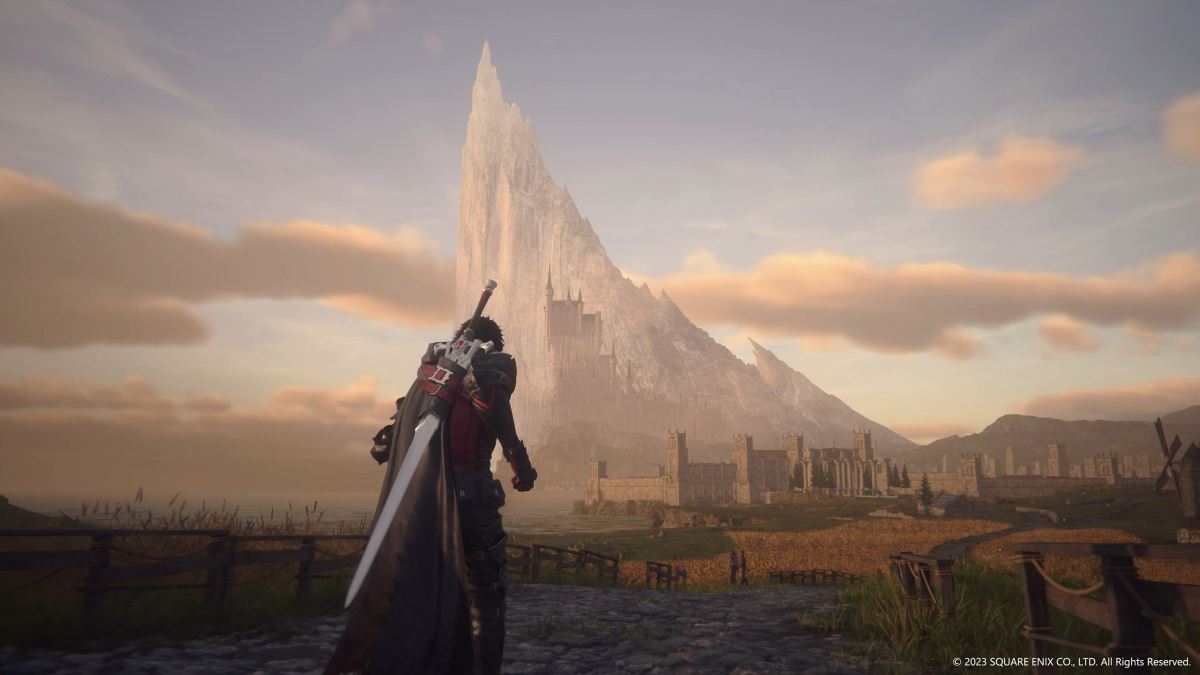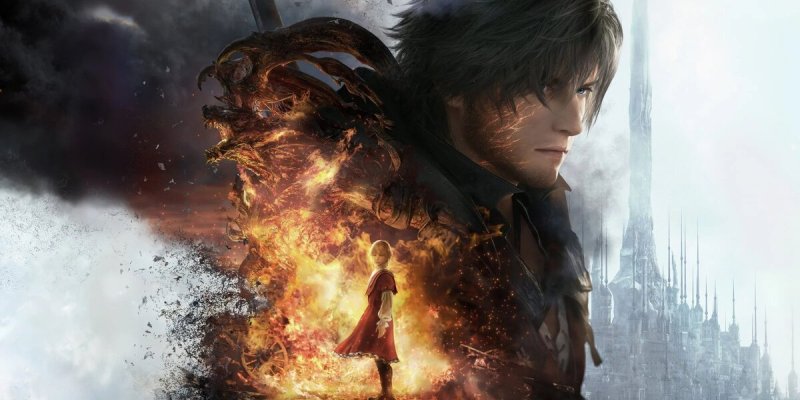It feels like there’s a lot of trepidation heading into the launch of Square Enix’s Final Fantasy XVI on June 22, even from longtime fans of the iconic RPG franchise. And honestly, I get it. Final Fantasy XV left an odd taste in lots of mouths, and as the series continues to lean heavier into the action side of things, some turn-based devotees might feel like they won’t have anything to latch onto in this latest installment.
But after playing through the FF16 demo on PlayStation 5, which includes the first two hours of the game along with a small slice from later on that shows just how deep and energetic the combat becomes, I’m completely sold on these characters, this story, and the spectacular action that surrounds them.
FF16 does a great job of making you invested in its characters extremely quickly. Joshua is a sweet kid burdened with being a chosen one. Clive is his caring big brother who takes his role as Joshua’s protector seriously. And Torgal is the cutest wolf-dog this side of Persona 3’s Koromaru. The strokes may be broad, but the writing is good, the performances are great, and the buildup to the inciting incident is handled extremely well.

If I had one minor gripe with the opening two hours, it’s from the actual opening 10 minutes or so. The story starts with a bombastic action scene in media res, before tossing us back in time to when Clive was a teenager. I understand that Square wanted to hook the audience by showcasing the spectacle of it all, but the story didn’t really get its hooks into me until it pumped the brakes and allowed me to spend time with its characters.
But that’s only a minor bump in the road, because by the time the FF16 demo ended, I was fully invested in Clive, the heart-breaking trauma that he had endured, and the motivation for the revenge that he will inevitably seek. As much as I love Final Fantasy XII for its incredible battle system, I haven’t felt this invested in the characters of an FF game since Zidane and crew in Final Fantasy IX, so job well done.
With this, the candle-lit political intrigue, emphasis on human stakes, and a focus on the toll that death takes on the survivors has heavy echoes of Square’s previous Ivalice games, including Final Fantasy Tactics, Vagrant Story, and Final Fantasy XII. And as someone who adores all three of those games, that’s some mighty high praise I can give to Final Fantasy XVI.

There are a lot of names, places, and general proper nouns tossed at you in the opening hours, so I really dig the game’s Active Time Lore system. At any point, you can pause the game and pull up a word cloud of five or six key figures in the given scene. If two characters are discussing a war over a special crystal, you can pull up this menu and get a brief paragraph refresher on each of those two characters, each of the two sides of the war, and the crystal that they’re fighting over. Just a great decision on Square Enix’s part, and something more games could take a cue from.
While the game’s story presentation clearly wears its influences like Game of Thrones and God of War 2018 on its sleeves, the game I kept coming back to was 2012’s criminally underrated Asura’s Wrath. Granted, that’s probably because I just finished replaying the game on a stream, but the way that major boss battles use Quick Time Events to not only showcase spectacular action, but emphasize the character-based drama that unfolds throughout a fight really lends an air of gravity to each of FF16’s many, many boss encounters. Also, any time I defeated a boss, I was met with a rapturous chorus singing the iconic “Victory Fanfare,” which gave me the same dopamine rush that seeing something like “Prey Slaughtered” in Bloodborne delivers, which rules.
Speaking of combat, I really started to gel with the fast-paced nature of Clive’s battles by the end of the FF16 demo, but I was really sold on it once I played through the small slice from later on in the campaign. Swapping between Eikon stances with a click of L2 allowed me to toggle among the beefier defensive stance of Titan, the swift AOE crowd control of Garuda, and the punishing damage of Phoenix. Each stance has its own special moves with unique cooldowns, and knowing how to space these out and against which kinds of enemies brought an element of strategy to the bombastic spectacle of the Devil May Cry 5-inspired combat.

Tying the whole thing together is the fact that your progress in the demo is saved, and if you end up buying the full game, you can pick up exactly where you left off. Square Enix has been doing this with a lot of its games in recent years like Dragon Quest XI and Live A Live, and it’s just a really excellent and consumer-friendly trend. More of this, please.
I know I’ve referenced a lot of other media in this preview, but the truth is FF16 kept reminding me of a lot of different things that I love, similar to my experience with Sonic Frontiers last November. Throughout these opening two hours, I saw shades of the aforementioned Game of Thrones, God of War, Asura’s Wrath, and other classic Final Fantasy games. But I also got hints of Neon Genesis Evangelion, Attack on Titan, and a whole mess of kaiju movies whenever the Eikons went to war. Sometimes I appreciate art that isn’t afraid to draw focus to its inspirations.
In the span of its two-hour demo, I went from cautiously optimistic on Final Fantasy XVI to completely on board for day one. If the full experience can match the quality of these first two hours, I feel like we’ll be looking back on this opening the same way we do with Final Fantasy VI’s snowy trek to Narshe or the bombing run in Final Fantasy VII – the first notes of a truly special game.
